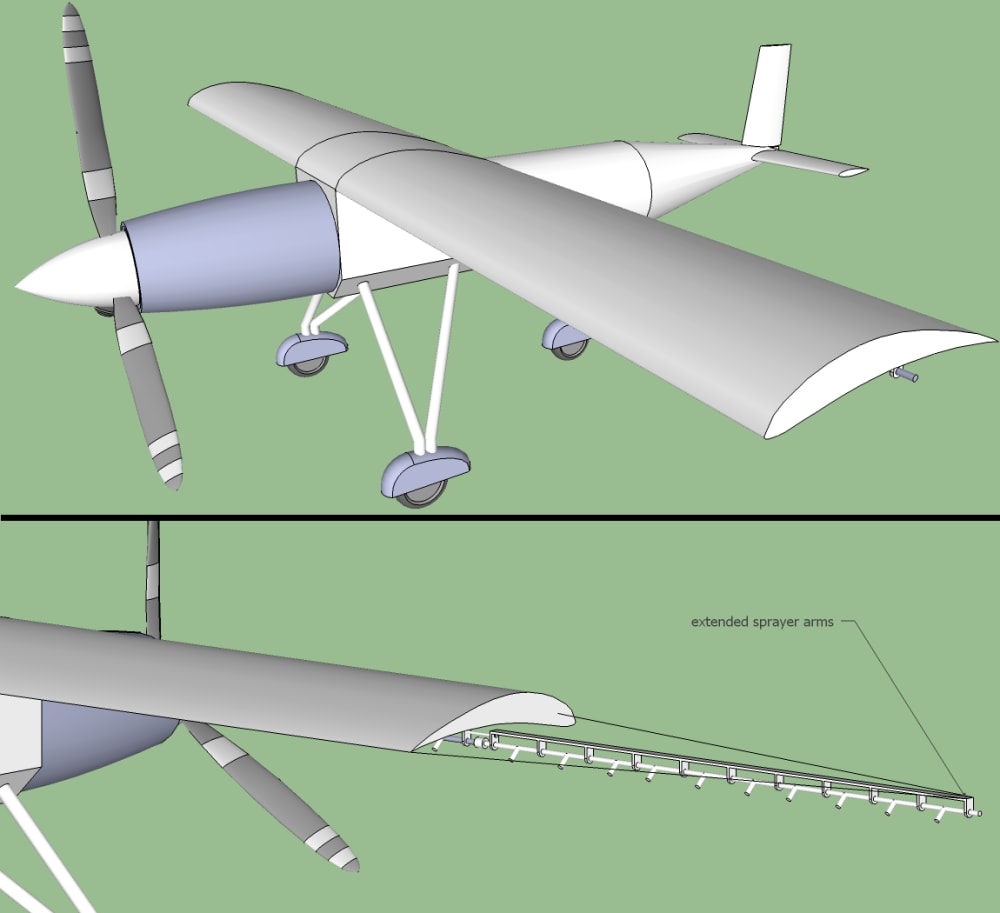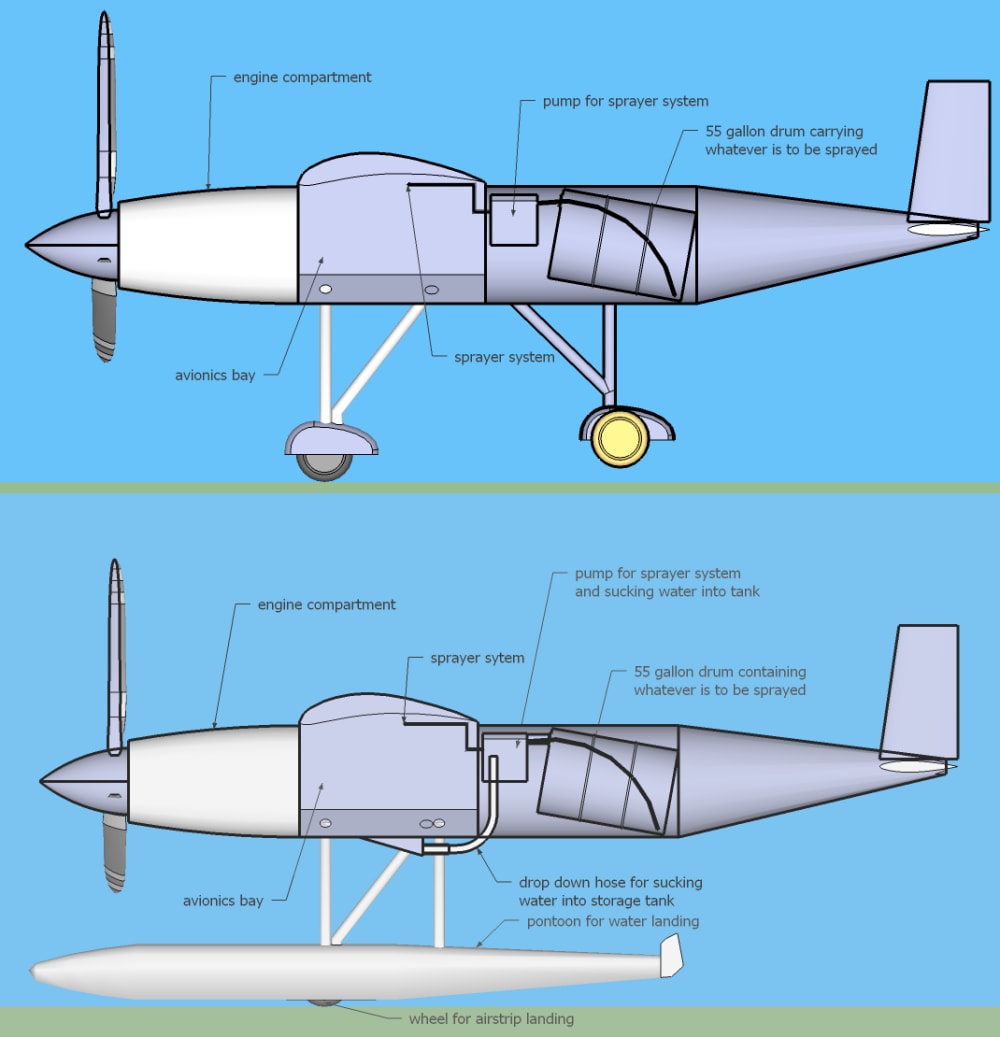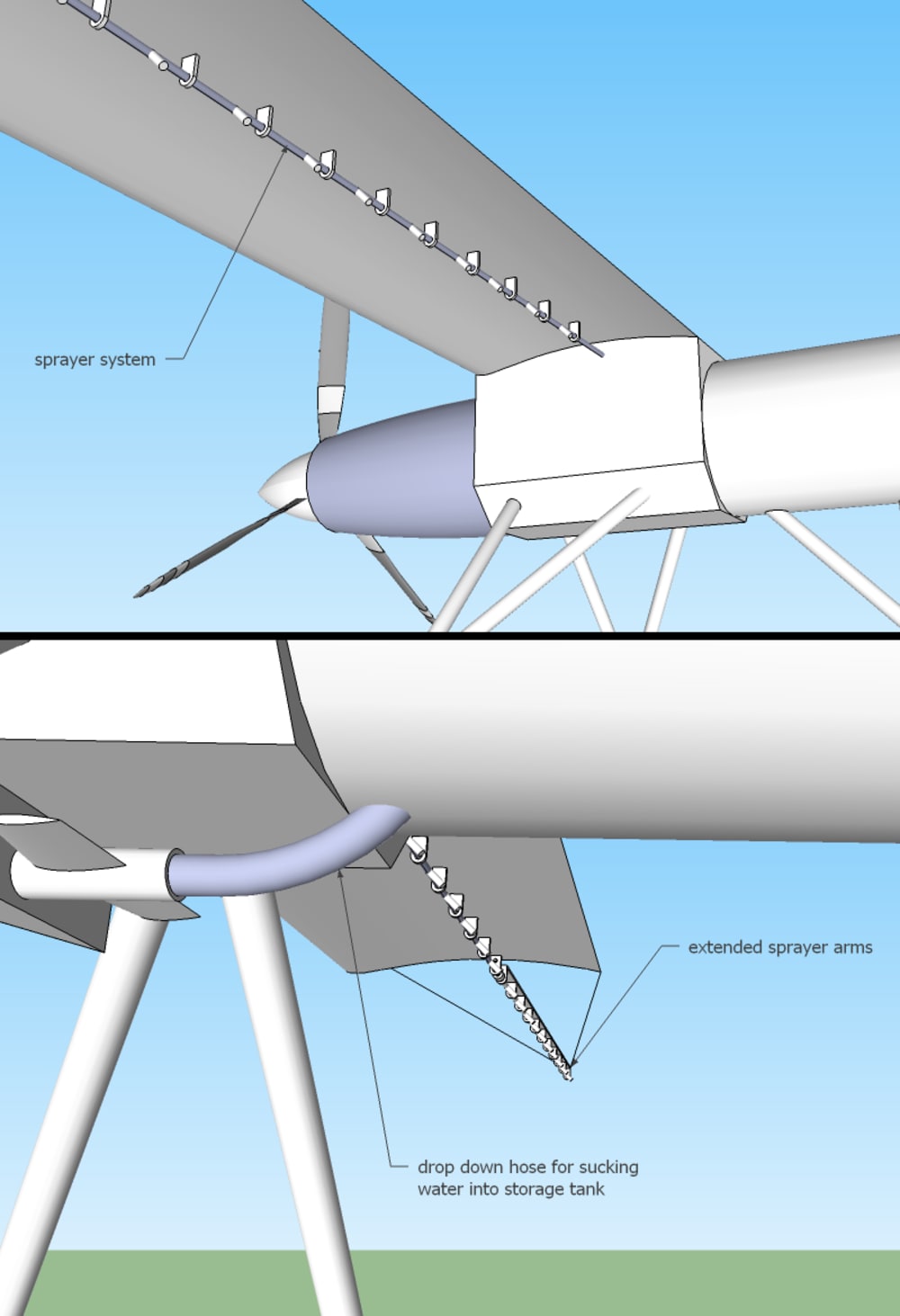The primary goal of the UMCAV is to provide a platform that can be adapted for multiple purposes using modular frames and parts, requiring little effort to switch between variations. While any system will have its pros and cons, the best thing an engineer can do is find a way to keep costs down while maintaining product integrity. As such, the aircraft will be designed so that internal components will consist of current off the shelf technologies that are easily accessible to reduce maintenance and production costs. The aircraft would be constructed from both metals and composites (i.e. carbon fiber and Teflon). The use of materials in specific locations would depend on cost, stress analysis, and weight considerations. Composites will reduce weight but can be expensive whereas metals can be cheap but heavy. Both materials will provide the necessary strength.
On-board storage will consist of either a custom tank or enough space to fit 55-gallon drums. The 55-gallon drums allow for standardization and ease of replacement when empty allowing for faster reload times. This will result in effective time management by increasing flight time. The custom storage tank will be designed according to the mission.
The aircraft will be big enough to get the job done, yet small enough for transport on a trailer. It’ll be controlled by a pilot on the ground, relatively close to the flight path. The safety factor of the aircraft will allow it to be durable with proper maintenance. Applications include, but are not limited to, crop dusting, fire fighting, search and rescue, science, and small cargo transport.
Given that we are currently in a recession and drought, farmers need to protect their crops as best they can. When applying fertilizers and insecticides, a ground-based sprayer system is preferred for smaller farms that cannot afford a piloted aircraft. This and other constraints have reduced the number of aerial crop dusters over the years. This system is intended to be a cheap and effective alternative.
The fire fighting version would be used to locate and fight smaller wild fires. With a major wild fire in the news at least once every year, fire fighters need every advantage possible. This variation of the UMCAV would be modified from the crop duster version and would consist of a hose that can drop from the bottom of the aircraft to refill its water tanks from nearby bodies of water similar to the way helicopters refill their water tanks when fighting fires.
With an expanding market in the field of UAV’s, these applications were bound to come up at some point. The fact that this single platform can accommodate more applications than what’s listed is what makes this such a novel idea. A small cargo capacity would be the ‘proof of concept’ and things would progress to a larger capacity aircraft as well as a vertical takeoff and landing capable aircraft in the future. This would also open up jobs for those with experience remotely operating aircraft.
Like this entry?
-
About the Entrant
- Name:Adam Chesterman
- Type of entry:individual
- Software used for this entry:Google Sketchup and Paint.net
- Patent status:none








